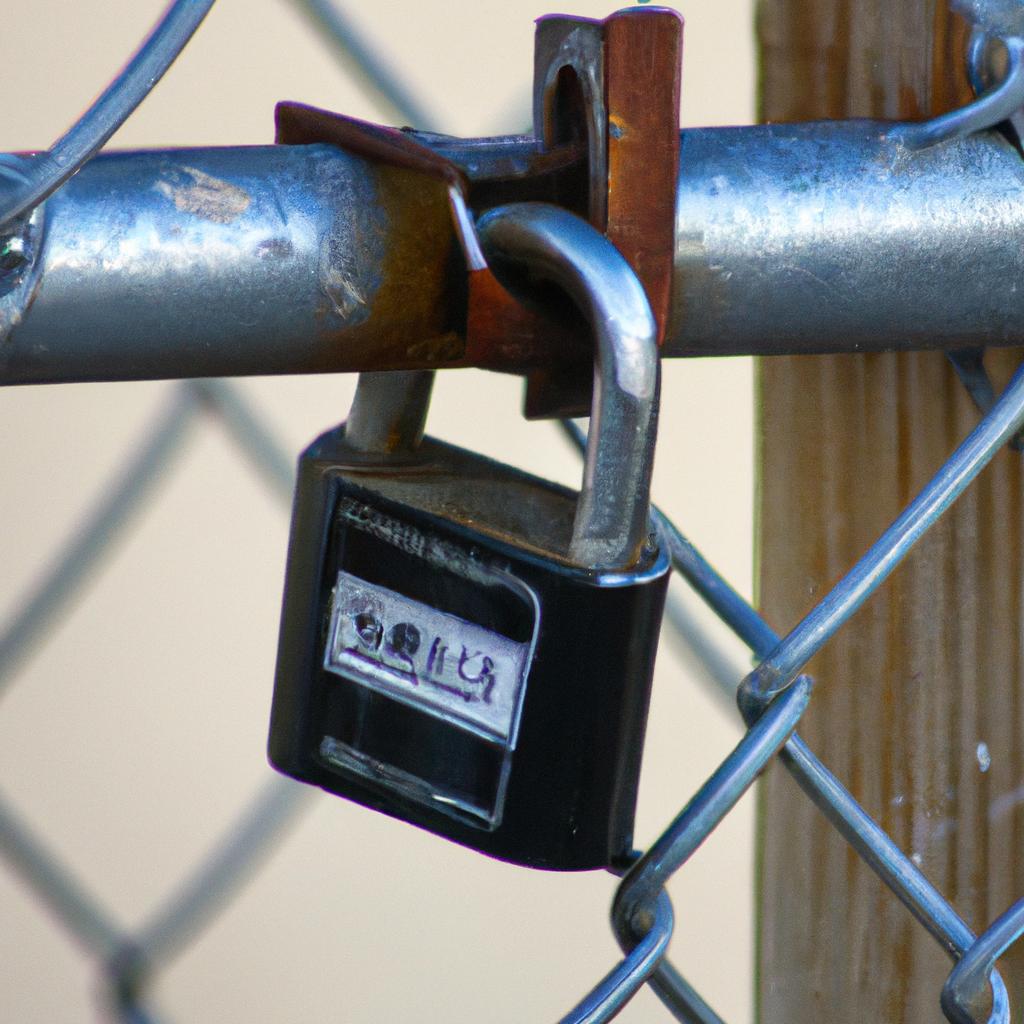Breaking Bad Habits: Strategies for Overcoming Unwanted Behaviors
We all have habits we’d like to break. Whether it’s nail biting or procrastination, bad habits can be difficult to stop. However, it is possible to overcome unwanted behaviors through careful planning and taking small steps. In this guide, we’ll take a look at how to identify bad habits, plan for change, and develop long-term strategies for breaking them.
Introduction
Bad habits refer to behaviors that are generally considered negative, wasteful, or otherwise undesired. It’s important to identify these behaviors and understand the underlying causes in order to properly address them. Oftentimes, developing healthier habits requires mental preparation, planning, and finding a supportive environment to help you through the process.
Common Bad Habits
The most common bad habits generally involve wasting time, overlooking personal safety, or engaging in negative self-talk. Examples of such habits include procrastination, neglecting regular exercise, and overindulging in comfort foods. Smoking, drinking alcohol, or using other drugs are also considered bad habits that can have serious health consequences if left unaddressed.
Priming Your Mind for Change
Before you begin to break a bad habit, you must first prepare yourself mentally. Ask yourself why you want to break the habit and what steps you can take to reach your goal. Developing a detailed plan with attainable goals can help you stay motivated and on track. Additionally, having a support system — whether it be friends, family, or colleagues — can help provide encouragement and accountability as you work to reach your goal.
Common Bad Habits
We all have bad habits. Some people may talk too much, procrastinate on their assignments or bite their nails when they are stressed or anxious. Bad habits can range from small, annoying behaviors, to more serious issues like substance abuse or gambling. It is important to understand why bad habits develop in order to figure out the best way to overcome them.
Bad habits often develop as a coping mechanism for someone in a difficult situation. For example, some people overeat when faced with stress or loneliness, while others may turn to alcohol or drugs for similar reasons. Other bad habits may be a result of boredom and feeling the need to do something to fill time. Similarly, people may develop habits out of a desire for attention or recognition from peers.
Oftentimes, bad habits become so comfortable that it feels difficult to break them. Despite this, it is possible to make lasting changes and break even the most stubborn habits.
Priming Your Mind for Change
Breaking a bad habit isn’t easy. It requires more than just a strong will and dedication. To successfully break a bad habit, you must first prepare your mind for the process ahead.
Start by understanding your motivation for wanting to break the habit. It’s important to create an internal motivation that is going to sustain you through the process ahead. Make sure your goals are attainable and measurable. This way, as you make progress, you can recognize it and keep your motivation high
In addition to motivating yourself internally, you’re going to need an external support system to help you along the way. Whether it’s family, friends or even a professional, having someone there to encourage and support you can make all the difference.
Stopping the Habit
Breaking habits can be hard but it is possible. To be successful, you’ll need to be aware of your own behavior and take note of what triggers you to act in undesired ways.
Being aware of your triggers is an incredibly effective tool when it comes to breaking bad habits. You can keep track of when and why you find yourself falling back into unwanted behaviors. This information can help you proactively avoid these situations and replace them with something new.
You can also consider your motivation for achieving a certain goal and use that as fuel to stay on track. Visualise your journey and focus on the positive outcomes you will achieve by breaking your bad habits.
Replacing the Habit
Changing a bad habit requires diligence and dedication. But it also requires replacing the behavior with something positive. We can’t simply get rid of a bad habit without putting something healthier and more beneficial in its place. It’s important to identify what action or behavior it will take to replace the old habit. Once that is determined, it’s time to incorporate it into your life and start forming a new habit.
To form a new habit and maintain it, there are a few helpful tips.
- Start small – choose one behavior, task, or action to focus on and gradually build up from there.
- Be consistent – practice the new habit daily or several times a week.
- Encourage yourself – reward yourself for meeting your goal.
- Make it easy – focus on making the new habit as easy as possible while still meeting your goals.
- Seek motivation – surround yourself with friends, family, and mentors that can help motivate you.
Working Through Setbacks
We all want to make changes and break bad habits in our lives, but sometimes it’s hard to stay on track. Even when you’re really motivated and have the perfect plan in place, you may still find yourself slipping up and reverting back to your old ways. When this happens, it’s important to remember that setbacks are natural and expected, and should not be seen as failure.
If you experience a setback in your journey to breaking bad habits, don’t give up. Here are a few tips for getting back on track:
- Take some time to reflect on why the setback happened and how you can avoid it in the future.
- Focus on the progress you have made and the positive changes you have achieved so far.
- Remind yourself of the benefits of changing your behavior.
- Find some additional sources of motivation such as quotes, stories, or videos.
- Try to make any adjustments to your plan that may help you stay on track in the future.
- Talk to someone you trust for extra support.
Remember, you can’t expect to change everything overnight. Taking one step at a time, going easy on yourself, and seeking support are all important ways to help you get back on course when you experience a setback.
The Power of Mindfulness
Mindfulness is a practice that has been used for centuries to increase self-awareness and improve well-being. It focuses on bringing awareness to the present moment, including your thoughts, emotions, and physical sensations. When you focus on the present moment with less judgement, it can help you cultivate a healthier attitude towards yourself and your experiences.
Bringing mindfulness to your bad habits can help in many ways. It can help you identify triggers, like feeling overwhelmed, angry, or anxious. This awareness allows you to become more self-aware and conscious of when and why you’re engaging in the behavior. With this knowledge, you can make a plan to avoid those triggers and when they do arise, you have the tools to step back and take a pause.
Mindfulness can also help with replacing those bad habits. By taking the time to observe your thoughts and feelings, you can learn how to better control them and direct them towards something positive and productive. It can also help with developing a sense of compassion for yourself, which can be an important part of breaking bad habits.
Another benefit of mindfulness is that it can help you stay focused on your long-term goals. When you’re mindful of the present moment, it will be easier to remain aware of what you want to achieve and how your bad habits prevents you from doing so. With this understanding, you will have more motivation to continue pushing forward.
Seeking Professional Help
Sometimes, breaking bad habits can be difficult and feel impossible. If you find yourself in this situation, it may be helpful to seek professional help from an expert in the field of behavior change and psychology. A professional can provide the necessary support to help you understand your behaviors more deeply and develop a tailored plan to help you break your habit for good.
They can also provide a supportive environment and offer guidance on how to manage anxiety or fear that may arise due to habit change. Seeking professional assistance can be an essential tool in helping you make lasting and positive changes to your lifestyle.
Case Studies
Success stories and personal accounts of breaking bad habits can both provide motivation and offer practical strategies for others. To reinforce the information provided in this guide, it is important to include case studies of people who have successfully achieved their goals. Hearing from a real life example can help readers understand how overcoming bad habits is possible and how they themselves can make progress.
For example, John had a lifelong habit of procrastination that affected both his personal and professional life. He spoke with a counselor, identified the triggers for his behavior and created an action plan to break his habit. He focused on simple changes, such as writing down his tasks for the day, breaking them into smaller steps and setting reminders on his phone. These small steps soon became second nature and he was able to stay on track with reaching his goals while also learning to manage his stress more effectively.
John’s story demonstrates that successful habit formation requires both dedication and determination. By making changes in the foundational lifestyle behaviors that contribute to a habit, individuals can slowly but effectively replace bad habits with healthier ones.
Breaking bad habits can be a difficult process, but it is not impossible. The key to success is developing an effective strategy for identifying and overcoming unwanted behaviors. This includes understanding what bad habits are and what contributes to their formation, preparing the mind for change, focusing on stopping the habit, replacing it with something new, working through any setbacks, and relying on mindfulness as a tool for making better decisions. Additionally, seeking professional help if needed may be beneficial in order to ensure successful habit-breaking. By following this guide, readers will have the resources they need to start making progress towards forming healthier habits.
Conclusion
Breaking bad habits can be a difficult process that requires patience and commitment. However, with the right mindset and support system, it is possible to make positive changes in your life. It’s important to focus on long-term goals and don’t give up when set-backs arrive. Make sure you take the time to listen to your body and mind and seek professional help if needed. Achieving success requires developing an understanding of yourself and your habits, making a clear plan, and replacing bad habits with better ones. Use the strategies outlined in this guide to get started on your journey to breaking bad habits and building better ones.
Bibliography/References
It is essential to properly cite all sources used throughout this guide in order to maintain accuracy and credibility. All facts, quotes, and research should be tracked back to their original sources by the authors. Listed below are the sources that have been used for this guide:
- The Power of Habit: Why We Do What We Do in Life and Business, Charles Duhigg
- Atomic Habits: An Easy & Proven Way to Build Good Habits & Break Bad Ones, James Clear
- The Willpower Instinct: How Self-Control Works, Why It Matters, and What You Can Do to Get It , Kelly McGonigal
- “Breaking Bad Habits: How to Beat a Bad Habit” from WebMD
- “Making Changes That Last: An Overview” from HelpGuide.org
comments: 0

